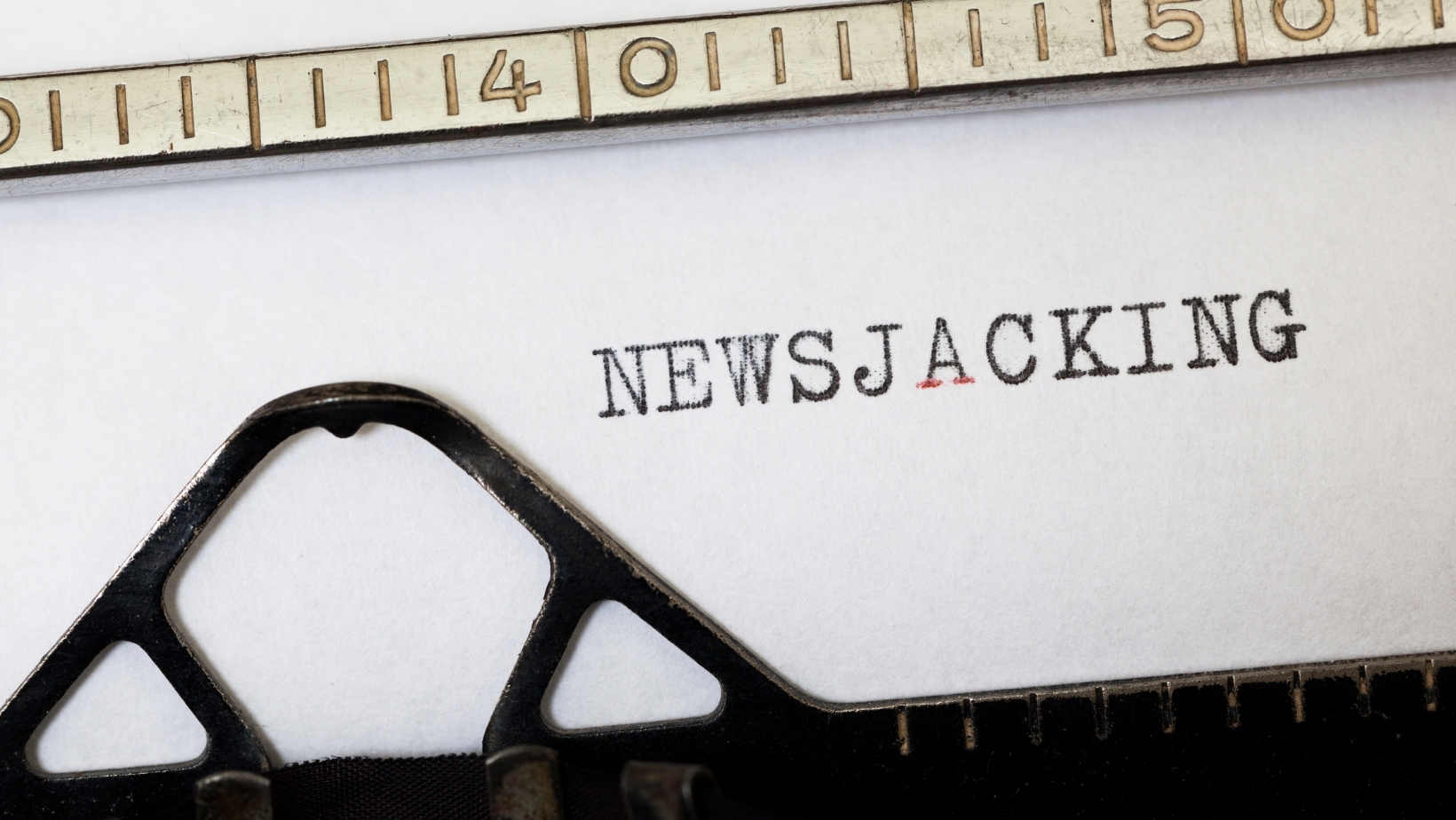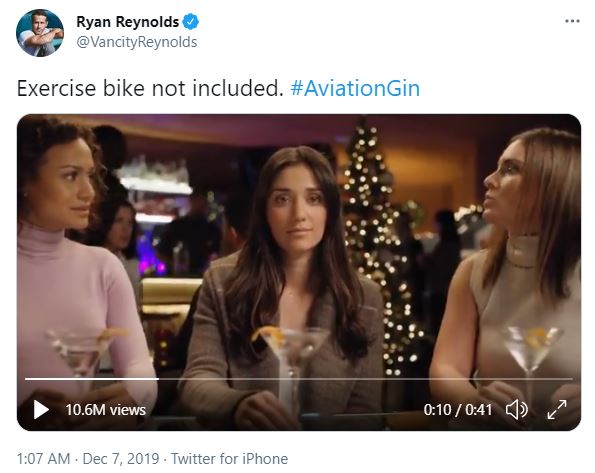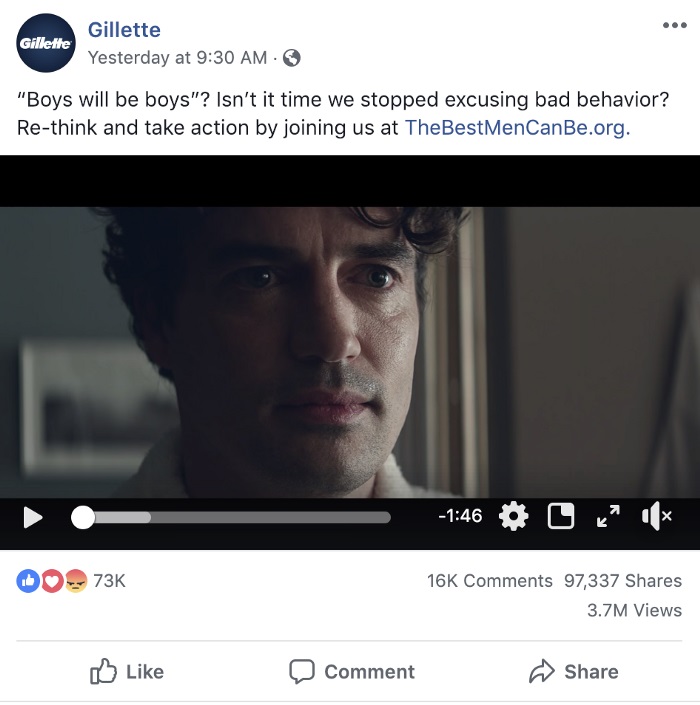May 1, 2021
Long Read: When is the right time to newsjack?


You’ve probably heard of newsjacking. It’s often mentioned with a note of scorn, or an eye-roll, and some less-than-scrupulous brands have cynically got on the bandwagon of inappropriate news items to promote an unrelated product. In the same breath, it can be the trending topic that EVERYONE is talking about. It’s rocky terrain that requires a seasoned professional to navigate!
But it’s not something to shy away from. I chatted with our PR expert Mia Hodgkinson to find out what newsjacking is, how newsjacking can impact your brand and how you can do it.
What is Newsjacking?
Newsjacking is when a company or brand mentions, or even creates a whole campaign around, a well-discussed, major news topic. This is usually led by the expertise of their PR and marketing representatives.
Popular through the noughties, newsjacking has long been a tactic used by marketers as a way for brands to piggyback on a topic’s popularity. The brand boosts their own message on a current of existing interest.
This approach has carried through and been heightened in the digital age, as trending topics and hashtags sweep along a flood of newsjacked content, similar (or sometimes, completely different from!) the initial item of interest.
Although there is always tough competition to be heard upon a sea of vocal comment, there is a huge amount of opportunity for brand visibility, too. If you get there early enough with clever, relevant input, you’ll likely reap a significant reward in terms of coverage.
How is newsjacking different to a publicity stunt?
A publicity stunt acknowledges news within a public venue or public business space. A recent example of a publicity stunt was when Madame Tussauds removed Megan and Harry from their display with the other Royals, after *that* Oprah interview where news broke that they were stepping away from ‘The Firm’.
Newsjacking, however, leverages the news item in question through a brand’s marketing activity, i.e. online, within publications, or on the TV or radio, etc. They simply tag on their addendum, comment or riff on the news story, and benefit from the extant coverage of the topic.
How does newsjacking help a company or brand?
Newsjacking helps the brand get discussed quicker and by bigger, different audiences. This might lead to coverage from bigger publications or channels than they usually might achieve coverage from. By adding to existing conversations, or ‘piggybacking’ off them, they become part of a (sometimes massive) surge of trending content.
Newsjacking attempts occur on everything from fancy awards ceremonies to serious political manifesto promises (check out AeroMexico’s amazing stunt around Trump’s border wall).
However, social media and the state of the online world today makes newsjacking something that has to be so much quicker than before. Brands have to identify relevant breaking topics and newsjack via a variety of content mediums.
Examples of Newsjacking in the last year:
As mentioned, newsjacking can be a cynical attempt to put a ‘brand stamp’ on sensitive news if done wrong. If done right – it makes your brand seem relevant, on-trend and active.
A “good” newsjack of “bad” content: Aviation American Gin
Last Christmas, an ill-advised Peloton advert featured a husband giving his wife a Peloton for Christmas, with the tagline “the gift that gives back”.
The ad was criticised heavily online for abiding by outdated gender norms, sexism and working against body-positivity messaging:
The newsjack? Well there were many. Within hours of the advert going live, the online world was alight with negative comments slamming the brand’s misogynistic misstep.
Ryan Reynolds created a subtle ‘spoof’ of the ad, for Aviation American Gin. It didn’t mention Peloton, but was a clever newsjack; a subtle dig. The ad featured a woman drinking gin with friends, playing on the idea that she was newly single post-Peloton gift. The tagline? “The gift that doesn’t give back”:
Directed to look like a sequel to the Peloton advert, the subtle and amusing dig was very clear, on-topic, and popular. The advert went viral, achieving more than 7.3m YouTube views so far and 55.6K retweets, alongside coverage in AdWeek and Marketing Land.
Why did the Aviation American newsjack succeed?
Because it was a really quick, clever response. Everyone was talking about the Peloton ad, so it leveraged the coverage and delivered a creative, tongue-in-cheek riposte. Not easy – but certainly worthwhile for the brand.
An example of a “bad” newsjack
Or was it? It certainly split opinion. Last year, Gillette co-opted the coverage surrounding the #MeToo movement. Trying to be more thought-provoking, and rewrite their traditionally strongly gendered advertising (“The best a man can get”), they launched an ad entitled “is this really the best a man can get?”.
They tried to explore toxic masculinity and negative masculine stereotypes, such as sexual harassment and the old adage “boys will be boys”.
Whilst all this is very valid, trying to address centuries-worth of misogyny and patriarchy in a 30 second ad was probably optimistic…
5The narrator comments “something finally changed and there will be no going back”…but what has changed? Just Gillette’s ad?
Honestly, the ad did receive both positive and negative reviews, so it certainly garnered plentiful coverage.
Many felt that Gillette were cynically out to make a quick buck and a bit of positive coverage from a highly sensitive movement, and that Gillette were far from being the best company to wade into the topic.
The ad was high-quality, made valid points and tugged on the heartstrings (three boxes checked for any marketer) – and indicated a big brand trying to evolve away from the brand image it had forged for itself many decades ago, in what was then a very different society. But it was a little saccharine, tone deaf, and over-simplified.
It’s a good example of newsjacking to highlight, because it stresses that newsjacking is not only reactive; your newsjack is not only going to see augmented coverage; in itself the newsjack can spark debate and discussion that could both positively and negatively impact your brand.
How to Newsjack?
As you can see from the above, newsjacking itself is not the only challenge. Newsjacking well, and getting positive results, is where marketing experience and expertise can really change the outcome.
Four imperatives:
• Be subtle & professional. You don’t need to reference the brand you’re newsjacking directly; a good newsjack makes the connection without seeming spiteful or obvious.
• Be empathetic & human. Consider your topic. Are you wading into a highly sensitive and divisive topic just for the sake of brand coverage? If so, you’d better think wisely, because getting on the wrong side of the coverage wave really could negatively impact your brand.
• Be tasteful & informative. Particularly if you are wading into a contentious topic, keep your response insightful rather than offensive, provocative or attacking.
• Use your team. Your hired PR and marketing professionals can keep an eye on both trending coverage and what your competitors are up to, putting you in a position to react to any opportunities that arise quickly and creatively. Believe in the potential, and power, of marketing to boost your brand – and invest in it accordingly.
Fancy learning more about the power of PR, marketing, content and coverage? Get in touch for a chat.




